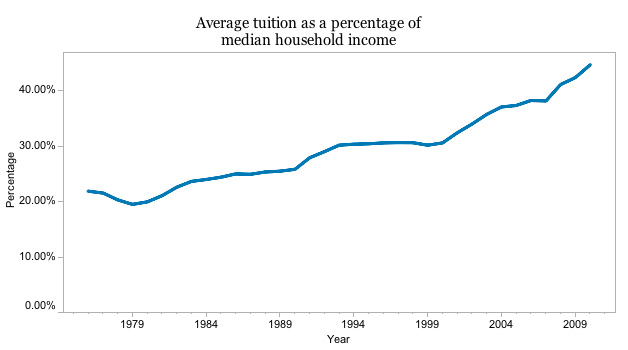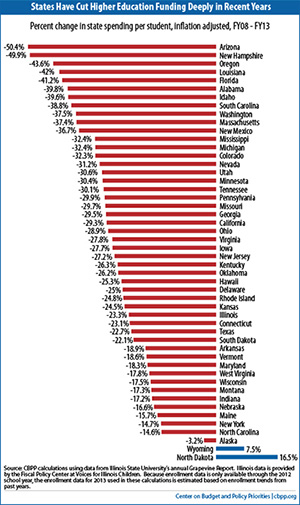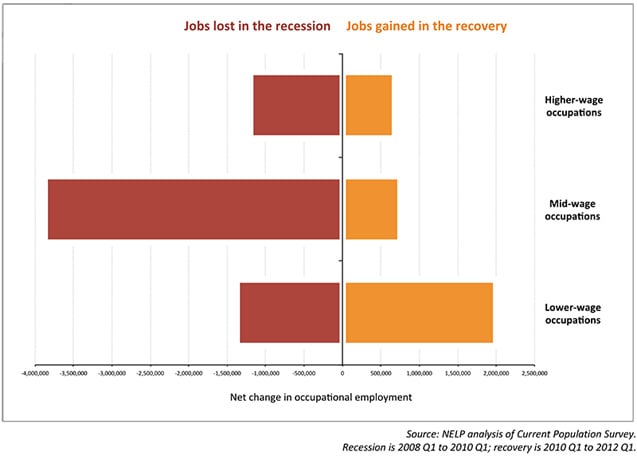Part of the Series
Moyers and Company
For many high school seniors, April is the month for tough decisions about colleges and universities — and how to cover their enormous tuitions. College tuition has been increasing far more quickly than household median income in recent years, and ProPublica reported last week that student fees — in addition to the tuition — are on the rise. These fees cover non-academic programs ranging from counseling services to late library hours to sidewalk maintenance. Some public universities use fees as a way to substantially raise tuition without actually increasing the figure on students’ bills labeled “tuition.” Mandatory “fees” at the University of Massachusetts — where tuition has remained flat by order of the state school board — are more expensive than the cost of tuition.

 States have cut higher education funding deeply in recent years.States have cut higher education funding deeply in recent years.
States have cut higher education funding deeply in recent years.States have cut higher education funding deeply in recent years.
These cuts also come at a time when well-paying jobs that could help students pay back their loans are increasingly hard to find. The Wall Street Journal recently highlighted data from the Labor Department reporting that 284,000 graduates with bachelors degrees were working minimum-wage jobs in 2012. The figure peaked at 327,000 in 2010. It has declined since then, but it’s still twice what it was in 2007 and 70 percent higher than it was ten years ago.
Studies by the National Employment Law Project have found that middle-wage jobs took the hardest hit during the Great Recession and those jobs have not come back during the recovery. In fact, low-wage jobs have rebounded 2.7 times as quickly as middle- and high-wage jobs. If this trend continues, students entering college this year will be less able to contribute to the economy than in years past, and less able to deal with the debt burden that comes with a college education.
 Low-wage jobs have rebounded, but high- and middle-wage jobs have not.
Low-wage jobs have rebounded, but high- and middle-wage jobs have not.
We have 9 days to raise $50,000 — we’re counting on your support!
For those who care about justice, liberation and even the very survival of our species, we must remember our power to take action.
We won’t pretend it’s the only thing you can or should do, but one small step is to pitch in to support Truthout — as one of the last remaining truly independent, nonprofit, reader-funded news platforms, your gift will help keep the facts flowing freely.
